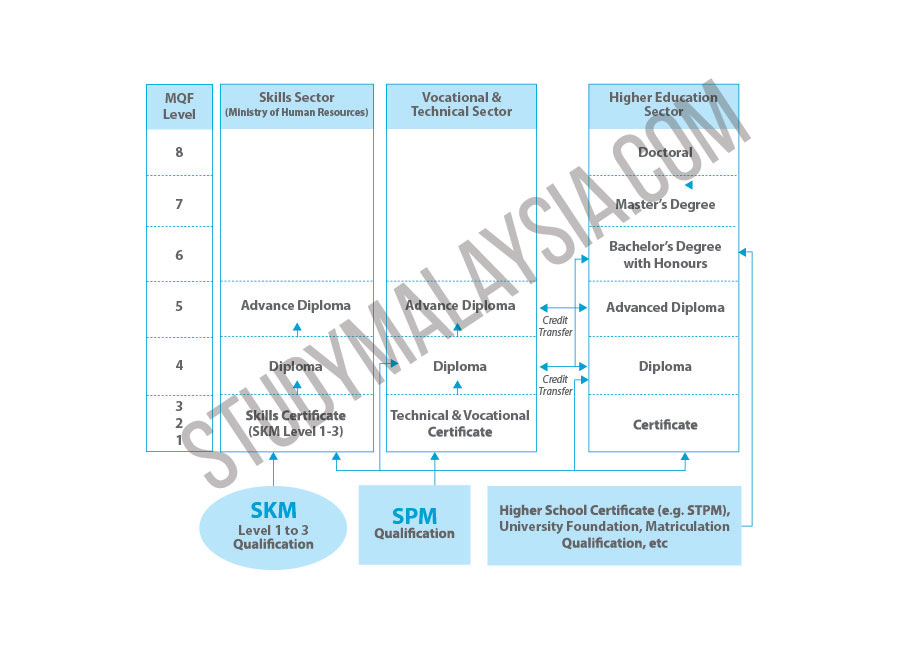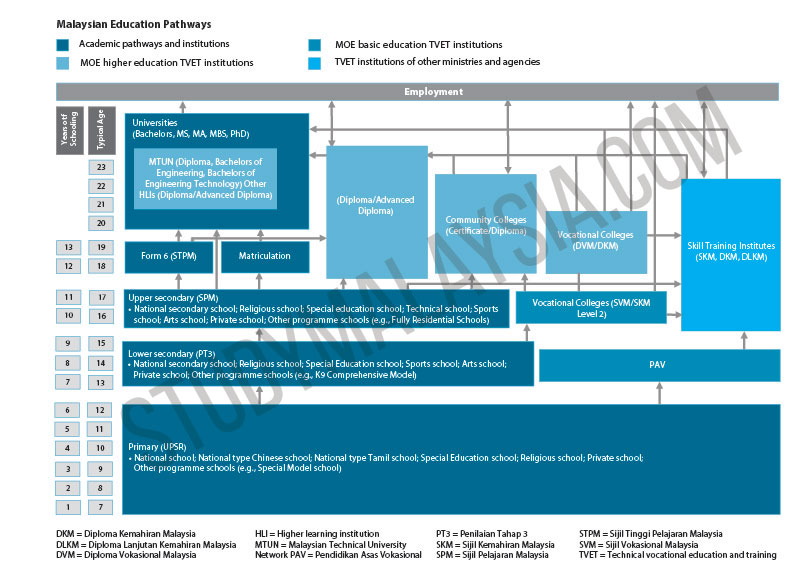Technical and vocational education and training (TVET) in Malaysia
by StudyMalaysia on October 12, 2016 | Top Stories

What is TVET?
Technical and Vocational Education and Training (TVET) includes formal, non-formal and informal learning that prepare young people with the knowledge and skills required in the world of work. According to the United Nations Organisation for Education, Science and Culture (UNESCO), TVET has been called many names over the years – apprenticeship training, vocational education, technical education, technical-vocational education, occupational education, vocational education and training, professional and vocational education, career and technical education, workforce education, workplace education, and others.
No matter its name, the common feature of TVET as defined by UNESCO is that it involves “in addition to general education, the study of technologies and related sciences as well as the acquisition of practical skills, attitudes, understanding, and knowledge relating to occupations in various sectors of economics and social life”. In TVET, young people have the opportunity to learn from basic to advanced levels across a wide range of institutional and work settings.
Did you know?
- TVET programmes in Malaysia are offered at certificate, diploma, and degree levels by seven ministries that include MOHE.
- According to MOHE’s Malaysia Education Blueprint (Higher Education), there will be an increase in demand for an additional 1.3 million TVET workers by 2020 in the 12 National Key Economic Areas (NKEA) identified under the government’s Economic Transformation Programme (ETP).
- To meet this demand, the government has increased the development expenditure given to public TVET institutions from RM 1.8 billion in 2010 to RM 2.1 billion in 2014.
- There are over 1,000 TVET institutions in Malaysia of which 506 are public institutions.
- Public institutions like polytechnics, community colleges, vocational colleges and other higher learning institutions can accommodate about 230,000 students.
- In 2013, out of the 429,000 students who sat for the SPM examination, 321,000 students enrolled in higher education and training programmes, with more than 50% enrolling at TVET institutions.
Studying TVET programmes in Malaysia
TVET programmes in Malaysia are offered at certificate, diploma, and degree levels by seven ministries that include the Ministry of Higher Education (MOHE), which offers the most TVET programmes to the highest number of students.
Presently, qualifications for academic (higher education) and vocational education sectors offered by MOHE’s universities, polytechnics, and community colleges are accredited by the Malaysian Qualifications Agency (MQA), whereas skills training programmes offered by skills training institutions are accredited by the Department for Skill Development (DSD) of the Ministry of Human Resources.
Pathways for Vocational Education, Skills Training & Academic Qualifications

(Graphic by Challenger Concept)
The diagram above shows three pathways or sectors for school leavers, namely, the Skills sector; the Vocational and Technical sector; and the Higher Education (Academic) sector.
School leavers who have completed SPM can acquire a TVET qualification from various providers or institutions in all the three sectors. The qualifications offered range from certificate, diploma advanced diploma to bachelor’s degree levels. Qualifications from the skills sector are awarded by the Department for Skills Development (Jabatan Pembangunan Kemahiran), Ministry of Human Resources. In contrast, the qualifications from the other two sectors are awarded by the Ministry of Higher Education.
(Note: There are also a number of skills qualifications awarded by other agencies.)
Types of Skills Qualifications under the Department for Skills Development (DSD)
There are five levels of skills qualifications (Level 1 – 5) under the National Skills Qualification Framework. Here's a brief explanation of what each level means and its corresponding competencies:
Definition of Skills Qualification Level 1 to 5 | |
|---|---|
| Qualification Awarded | Competencies Achieved/Expected |
| SKM Level 1 |
|
| SKM Level 2 |
|
| SKM Level 3 |
|
| Level 4: Diploma Kemahiran Malaysia, DKM (Malaysian Skills Diploma) |
|
| Level 5: Diploma Lanjutan Kemahiran Malaysia, DLKM (Malaysia Skills Advanced Diploma) |
|
Vocational Education Programmes Leading to MOE’s Vocational Education Qualifications
Vocational education is offered by educational institutions under MOE which include PAV (for UPSR leavers), vocational colleges, community colleges, polytechnics and MTUN universities. The qualifications offered include certificate, diploma, Diploma Vokasional Malaysia (DVM), advanced diploma, and bachelor’s degree (vocational education).
Upon completion of primary school education, UPSR (Standard 6) school leavers can opt to pursue Junior Vocation Education or Pendidikan Asas Vokasional (PAV) at public schools. Students who have completed Form 3 (PT3) have the option of pursuing the skills training pathway (at either public or private skills training institutes) that leads to 5 levels of skills qualifications within the skills sector. They can also pursue a 4-year vocational education programme at MOE’s Kolej Vokasional that leads to the award of Diploma Vokasional Malaysia, DVM. The DVM programme at Kolej Vokasional is also open to PAV graduates.
School leavers who have completed SPM can enrol at MOHE’s Kolej Komuniti, polytechnics and MTUN (Malaysia Technical University Network) for vocation education to pursue certificate, diploma and advanced diploma qualifications. The STPM/Matriculation school leavers and Diploma holders can advance to MTUN’s bachelor’s degree qualifications.
TVET providers that come under MOHE each has a specific target audience with different levels of qualifications. As an example, community colleges offer qualifications mainly at certificate level, while polytechnics offer diplomas and advances diplomas (see Table 5.3). MTUN offers both diplomas and bachelor’s degree courses.
The Various Education Pathways in Malaysia (leading to academic qualifications, vocational education qualifications and skills qualifications)

Source: Adapted from Malaysia Education Blueprint (Exhibit 4-3)
Different roles of the four types of Ministry of Higher Education TVET institutions | ||||
| Vocational colleges | Community colleges | Polytechnics | Malaysia Technical University Network (MTUN) | |
| Target age group |
|
|
| 18-20 years (after Form 5) |
| Entry requirements for type of qualification | PT3: Grades
|
|
|
|
Note: SVM = Sijil Vokasional Malaysia, DVM - Diploma Vokasional Malaysia, WBL = Work Based Learning, PT3 = Peperiksaan Tahap 3, SPM = Sijil Pelajaran Malaysia
Source 1: This article is adapted from the Education Guide Malaysia (14th edition)
source 2: https://www.studymalaysia.com/education/top-stories/technical-and-vocational-education-and-training-in-malaysia